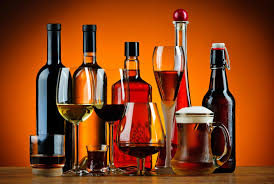The State of the Booze Business: What Does the Future Hold?
- arthshapiro
- Jul 9, 2024
- 4 min read
Updated: Jun 25
The U.S. is currently in a period of transformation, with widespread shifts in most businesses. The alcohol industry stands out as it undergoes changes that are not only fundamental but also unique, driven by changing consumer preferences, technological advancements, and shifting demographics.
Here is a close look at the key factors affecting the industry.
The “sober curious” movement
The sober curious movement is a lifestyle approach where people become more mindful about their alcohol consumption without necessarily committing to complete abstinence. It involves deciding if, when, and why to drink. Dry January is a good example.
One of the key factors driving the non-alcohol trend is the ‘sober curious’ movement.
Non-alcohol beverages growth
This shift is strongest among younger generations, with Gen Z (born 1997-2012) drinking over 20% less than other generations did at their age. The non-alcohol beverage market is expected to grow 31% by 2024, making it the third fastest-growing beverage category in the U.S. Source.
This shift is reflected in the market with beer sales stagnating, wine offering alcohol-free alternatives, and spirits brands introducing non-alcohol versions of cocktails.
Premiumization
This is not a new trend; it has grown for years, if not decades, and is accelerating.
First and probably foremost is drinking at home. Most Americans say they consume alcohol at home, and 46% of those surveyed say they are likely to treat themselves to premium options there. In addition, the longstanding idea of “drinking less but drinking better” continues to apply.
Premiumization is most notable in spirits. Overall, 33% of Americans said they had spent $50 or more on a bottle of alcohol in 2022, against just 24% in 2021. Furthermore, six in 10 online shoppers say they spend more on alcohol online than in-store. Source.
E-commerce and Direct-to-Consumer (DTC)
While some recent reports show a slowing of the DtC market, the growth, driven mainly by Covid, is dramatic. Total beverage alcohol e-commerce sales are expected to grow 66% by 2025, reaching $42 billion annually. This trend is fueled by consumer demand for convenience and the industry’s adaptation to changing purchasing habits.
“IWSR predicts a 2023-27 value compound annual growth rate (CAGR) of 7% for online alcohol sales in the U.S., compared to a total beverage alcohol (TBA) CAGR of 1% over the same period. This would result in e-commerce’s TBA share increasing from 3.2% in 2022 to 3.9% in 2027. However, the 7% growth is a drop on the 11% CAGR prediction estimated for 2022 to 2026.” Source.
Functional Benefits
There’s a growing interest in functional beverages that offer benefits beyond taste and alcohol content. The functional beverage market is projected to reach $261 billion by 2032, with a CAGR of 6.5%. These drinks often include added vitamins, minerals, or other health-promoting ingredients.
From Clarkston Consulting:
“While functional beverages themselves aren’t a new concept, the development of functional alcoholic beverages is relatively new to the industry. One of the driving brands in this market, Vizzy, offers fortified alcohol products designed to incorporate vitamins and antioxidants into the drinking experience. Other beverages released include Hard Kombucha, which is low-calorie, made with real fruit, and has an assortment of other natural benefits while still providing the desired alcohol content. FitVine has also released wines that stand out for zero sugar content without compromising flavor or ABV.”
Ready-to-drink (RTD) Cocktails and Canned Beverages
RTD cocktails and canned beverages continue to gain popularity, offering convenience and portability. This category is currently the fastest-growing product in the industry and is expected to earn an additional 8% of the market by 2025. The trend is driven by consumers seeking easy-to-consume options for various occasions.
The RTD alcoholic beverages market was estimated at $18.7 billion in 2023 and is expected to reach $28.6 billion in 2033, growing at a compound annual growth rate of 7.9%, according to this report.
Cannabis-Infused Beverages
This is a trend/prediction that is well worth considering or, perhaps, troubling.
As cannabis legalization expands, THC-infused beverages are emerging as a potential competitor to traditional alcoholic drinks. The cannabis-infused drinks market is projected to grow at a CAGR of 37.8%, reaching $8.7 billion in annual sales by 2032. Source.
According to a recent report on CNBC, for the first time, more Americans are using marijuana on a daily or near-daily basis than alcohol. In addition, from 1992 to 2022, the per capita rate of daily or near-daily cannabis use increased 15-fold.
Other areas
Sustainability and Eco-Friendly Packaging: Introducing recyclable or biodegradable packaging and reducing carbon footprints in production and distribution, to name a few.
Craft and Artisanal Products: While the craft beer boom has somewhat stabilized, there’s still strong interest in craft and artisanal products across all alcohol categories. Craft spirits are seeing growth as consumers seek unique and locally produced options. Source
# # #
The best way I know to summarize the changing climate for the alcohol industry is to leave you with a favorite quote from Peter Drucker, the renowned management consultant.





Comments